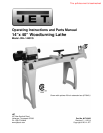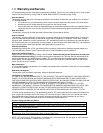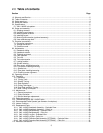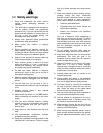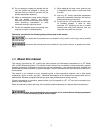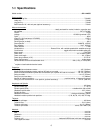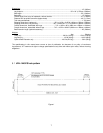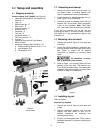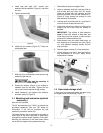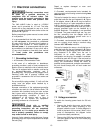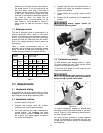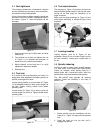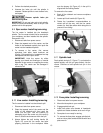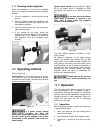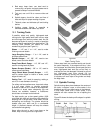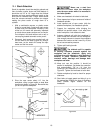
4
3.0 Safety warnings
1. Read and understand the entire owner’s
manual before attempting assembly or
operation.
2. This wood lathe is designed and intended for
use by properly trained and experienced
personnel only. If you are not familiar with the
proper and safe operation of a wood lathe, do
not use it until the proper training and
knowledge have been obtained.
3. Always wear approved safety glasses/face
shields while using this machine.
4. Make certain the machine is properly
grounded.
5. Before operating the machine, remove tie,
rings, watches, other jewelry, and roll sleeves
up past the elbows. Remove all loose clothing
and confine long hair. Do not wear gloves.
6. Keep the floor around the machine clean and
free of scrap material, oil and grease.
7. Keep machine guards in place at all times
when the machine is in use. If removed for
maintenance purposes, use extreme caution
and replace the guards immediately.
8. Do not over reach. Maintain a balanced
stance at all times, so that you do not fall or
lean against rotating parts.
9. Make all machine adjustments or maintenance
with the machine unplugged from the power
source.
10. Use the right tool. Do not force a tool or
attachment to do a job that it was not designed
to do.
11. Replace warning labels if they become
obscured or removed.
12. Make certain the switch is in the OFF position
before connecting the machine to the power
supply.
13. Give your work undivided attention. Looking
around, carrying on a conversation and "horse-
play" are careless acts that can result in
serious injury.
14. Keep visitors a safe distance from the work
area.
15. Use recommended accessories; improper
accessories may be hazardous.
16. Read and understand warnings posted on the
machine and in this manual. Failure to comply
with all of these warnings may cause serious
injury.
17. Some dust created by power sanding, sawing,
grinding, drilling and other construction
activities contain chemicals known to cause
cancer, birth defects or other reproductive
harm. Some examples of these chemicals are:
• Lead from lead based paint.
• Crystalline silica from bricks, cement and
other masonry products.
• Arsenic and chromium from chemically
treated lumber.
Your risk of exposure varies, depending on
how often you do this type of work. To reduce
your exposure to these chemicals, work in a
well-ventilated area and work with approved
safety equipment, such as face or dust masks
that are specifically designed to filter out
microscopic particles.
18. Do not operate this lathe while under the
influence of drugs, alcohol or any medication.
19. Keep tools sharp and clean for safe and best
performance. Dull tools can grab in the
workpiece and be jerked from the operator's
hands, causing serious injury.
20. Check the condition of the stock to be turned.
Make sure it is free of knots, warpage,
checked ends, improperly made or cured glue
joints and other conditions which can cause it
to be thrown out of the lathe.
21. Securely fasten spur and live centers to the
material being used.
22. Check centers and tapers in the headstock
and tailstock to be sure they are free of dirt or
rust, and oil lightly before inserting centers.
23. Test each set-up by revolving the workpiece
by hand to ensure it clears the tool rest and
bed. Check the setup at the lowest speed
before increasing to operating speed.
24. Use the correct cutting tool for the operation to
be performed and keep all tools sharp.
25. Use low speeds for roughing and for long or
large diameter work. If vibration occurs, stop
the machine and correct the cause.
26. When sanding, remove the tool rest from the
machine, apply light pressure and use a slow
speed to avoid heat buildup.
27. When turning large diameter pieces, such as
bowls, always operate the lathe at low speeds.
See the speed recommendation chart in sect.
14.



